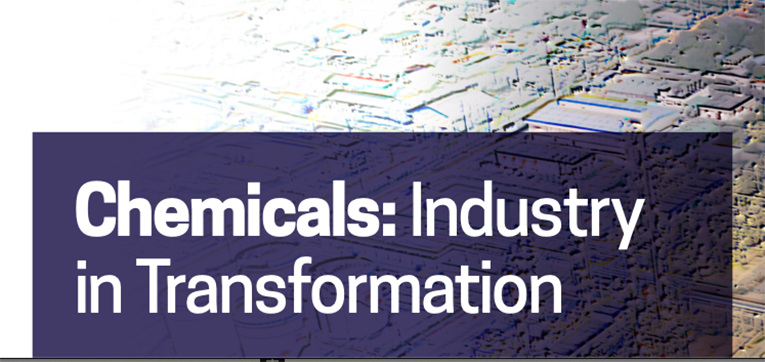Where the 2010’s marked a decade of growth for the US petrochemical industry, the 2020’s are poised to be a decade of transformation. And, while there has historically been a strong linkage between energy and chemicals; market forces are likely to drive more independence in the energy-to-chemicals value chain.
victoria meyer – progressio global
By Victoria Meyer – President, Progressio Global
Thus, the North American petrochemical industry rode a wave of growth throughout the last decade, driven in large part by access to cheap feedstock via shale gas. Indeed, over $120 billion was spent on hundreds of projects, from small expansions to massive petrochemical megaprojects.
Investments were strong until the end of the decade, when chemical investing, particularly in megaprojects, slowed down as the first of the new plants started up. Then, the industry recognized an increased potential for future oversupply; also, markets questioned whether a broad second wave of investment was viable. Enter COVID-19 in early 2020 and growth and investment slammed to a screeching halt, at least temporarily; while individuals, markets, and companies grappled with the impacts of the pandemic.
Moreover, as we move forward in a post-pandemic world, the likelihood of strong investment in traditional chemical value chains is reduced. Further, trends are reshaping chemical industry strategies and focus. Also, ultimately a reduced interdependence of the energy- to-chemicals value chain is seen.
Indeed, a number of disruptive forces are at work in the chemical industry driving this transformation. For instance, increasing market volatility influenced by value chain dislocations; also, the acceleration of sustainability and circularity, and increasing focus on green solutions.
INCREASING MARKET VOLATILITY, INFLUENCED BY VALUE CHAIN DISLOCATIONS
The interconnectedness of the energy- to-chemicals value chain has been both a strength and weakness to the chemical industry. Moreover, this interconnectedness, where refinery off streams become chemical feedstocks, and, in turn, chemical cracker products become additional chemical products, has created a symbiotic relationship. Yet, as we saw in 2020, when one part of the value chain halts abruptly; while another sees increased demand, the value chain becomes stressed and dislocated and, alternate solutions will develop.
A good example of this occurred in the propylene value chain. Therefore, refinery grade propylene (RGP) is a key feedstock into propylene-derived chemical products, including polypropylene.
With the abrupt cessation of air and road travel at the beginning of 2020, refineries slowed or idled and RGP production diminished to a trickle. As a result, this left polypropylene producers scrambling for feedstock (and market prices escalating wildly). On the other hand, the demand for polypropylene increased, driven in large part of healthcare; for instance, including personal protective equipment (PPE), facemasks, and other single-use medical products.
There are already alternate sources of propylene feedstock, including cracker streams and on-purpose propylene production; typically via propane dehydrogenation (PDH). Also, chemical companies are continuing to pursue and develop alternatives to its reliance on refinery byproducts.
Read more of our July-August Issue, here; Comparing Natural Gas Storage With Deep Saline Injection Of CO2
ACCELERATION OF SUSTAINABILITY AND CIRCULARITYACCELERATION OF SUSTAINABILITY AND CIRCULARITY
While the pandemic stalled the implementation of plastic bag bans and (temporarily) silenced the outcries against single-use plastics; the chemical industry and major plastics producers know that it is only temporary.
Chemical companies, big and small, are creating alliances to respond to the increasing pressures against plastics and innovating to create sustainable solutions to support what is a $430 billion industry; accounting for 1 million jobs and one in which 60% of all ethylene, the backbone of the petrochemical industry, is turned into polyethylene.
Thus, innovation is rampant across the chemical and plastics industry, as investors and operators, ranging from startups to private equity-backed firms to Fortune 50 companies, hustle to create solutions. Accordingly, the most promising is the focus on chemical recycling and pyrolysis as a means of transforming plastics waste back into a chemical feedstock. As those projects and technologies succeed and eventually increase in scale; it has the potential to further stretch the interdependence of the energy-to-chemicals value chain.
THE “GREENING” OF THE INDUSTRY
Much like the refining industry is trying to re-invent push toward green and sustainable solutions, to combat the rise in electric vehicles (EV); the potential refinery demand reduction or dislocation, so, too does the chemical industry working to make that pivot.
So, some of this is in response to the reduction in chemical feedstocks from refineries as overall demand for refined products decreases; particularly, with changing transportation patterns and the rise in EV. There is also distinct focus on green and renewable chemistry as an alternative to fossil-fuel based products, with an impressive focus by leading companies on green hydrogen.
HOW ARE SUCCESSFUL COMPANIES RESPONDING TO THESE TRENDS AND CHANGES?
1. Investing in independence, while leveraging existing interdependence
Leading chemical companies are indeed investing in products and technologies that are single- product focused, with less dependence on prior refinery or cracker outputs. For instance, investments in on- purpose hexene and continuing investments in PDH units as feedstocks for polypropylene. Also, for other propylene derivatives by a variety of players, creating relative independence in the value chain. At the same time, these same companies are heavily investing in supply chain technologies and resources; particularly, to more effectively understand the complexities and leverage the interdepencies across the shifting energy-to-chemicals value chain.
2. Increasing organizational agility by rapidly trialing new technologies to support sustainability, circularity, and growth goals
3. Partnering in industry solutions while competing fiercely with individual investments
Leaving nothing to chance, many companies are running parallel paths of investing in and searching for industry solutions; for instance, by participation in groups such as Alliance to End Plastics Waste; while also applying ample company resources and millions of dollars to finding their own solutions to challenges such as circularity and chemical recycling, carbon capture, and green hydrogen.
As the decade progresses, chemical companies and the energy-to-chemicals value chain will see rapid transformation. Particularly, to a more sustainable and competitive future, with shifting relationships and dependencies on upstream value chain partners.


